A traditional craft in Colombia that is often less highlighted is the country’s world-renowned ceramics industry. And the heart of that industry lies in the small pueblo El Carmen de Viboral near Medellín, which is definitely worth visiting. El Carmen de Viboral is located only 34 miles (54km) from Medellín in the Eastern Hills.
Colombia’s rich indigenous history and varied cultural background has fostered a country abundant in artisanal crafts. From the colorfully woven Wayuu mochila bags, to the signature black and white rings of a Sombrero Vueltiao, to the delicate silver filigree jewelry characteristic of Mompox and Sante Fe, there are many great products to be found.
Colombia’s ceramics industry is also starting to become more well-known and is quite interesting. El Carmen de Viboral has the added benefit of not yet being on the foreign tourist trail, which makes a visit there all the more authentic.
This unassuming pueblo – still waiting to be discovered by foreigners – is full of pottery shops and a number of still surviving workshops. The brightly colored ‘Ceramics Street’ adds to its charm. It’s the perfect day-trip from Medellín to learn about the ceramics history in Colombia and to pick up a bargain souvenir.
The Ceramics Industry in Colombia
Some will argue that Ráquira, a pleasant little town in Boyaca department, is the ceramics capital of Colombia. It is true that Ráquira has been making pottery since pre-Columbian times and in fact the city’s name translates from the old Chibcha language as the ‘City of Pots’.
However, the pottery-making in Ráquira today involves mass production and machines. This industrialization has left only a small percentage of the residents making pottery by hand the traditional way. And most of what is produced are terra-cotta colored flowerpots, piggy banks, and vases.

An artisan in El Carmen de Viboral painstakingly hand paints fruit designs on a plate that will be shipped to a factory in Italy
In comparison, the pocket-sized pueblo of El Carmen de Viboral can justifiably claim to be the heart of Colombia’s ceramics industry. This is because there are still several factories and workshops in existence that produce artisanal, individually hand-decorated ceramics.
Also, the ceramics production in El Carmen de Viboral focuses primarily on exquisite tableware, kitchen utensils, washbasins, candlesticks, and vases.
It’s renowned tradition of ceramics making has placed El Carmen de Viboral on the world map.
Known as the cradle of artisan ceramics in Colombia, pieces from El Carmen de Viboral are even owned by the likes of Queen Elizabeth II and former U.S. President Barack Obama. Even The Pope visited El Carmen de Viboral on June 15, 2015 and was said to be dazzled by the handicraft.
7 Recommended Things to Do in El Carmen de Viboral
Here are seven recommended things you can do when visiting El Carmen de Viboral:

This plate mural at the Museo de la Cerámica in El Carmen de Viboral depicts a a scene of local village life
1. Tour the Museum of Ceramics
Nestled in the corner of the town’s Casa de la Cultura, you will find a small three roomed museum dedicated to telling the history of ceramic production in the region through timelines and artifacts.
The ceramic tradition of El Carmen de Viboral goes back to 1898. In that year, artisan Don Eliseo Pareja discovered feldspar and quartz – the fundamental minerals for clay pottery production – in the nearby fields. The following year he founded ‘Locería del Carmen’, the first pottery factory in the pueblo.
Quickly other factories were founded like the New Locería del Carmen, Locería Cruz Férrea and Locería Antioqueña. These factories became the models for the future factories to come. The largest factory later came to have up to over 500 employees and serval coal furnaces.
For generations afterwards, the town’s main economy was the production of these elaborate pieces of ceramic handicraft and there were more than 25 factories dedicated to ceramics manufacture.
However, this activity began to decline in the late 70s and early 80s due to various factors including the introduction of cheaper products imported from China and the raising costs of local production.
Later, during the 80s and 90s, the municipality of El Carmen de Viboral was strongly affected by the wave of violence engulfing large parts of the country. This period forced a large amount of its population to be displaced and added to the closure of many factories
By the late 90s, little by little, the tradition started recovering again.
Today there are more than 27 companies dedicated to ceramics, some bigger than others. Whilst they do not compare with the great factories of decades ago with several hundred employees, they are preserving this century old tradition.
The museum outlines this history in detail. The exhibits also describe the crockery-making process and delve into how some of the local minerals are used to create the bouquet of colors hand-painted on each dish.
When you are at the museum, don’t miss the large mural made up of individual plates that is embedded into the wall at the entrance.
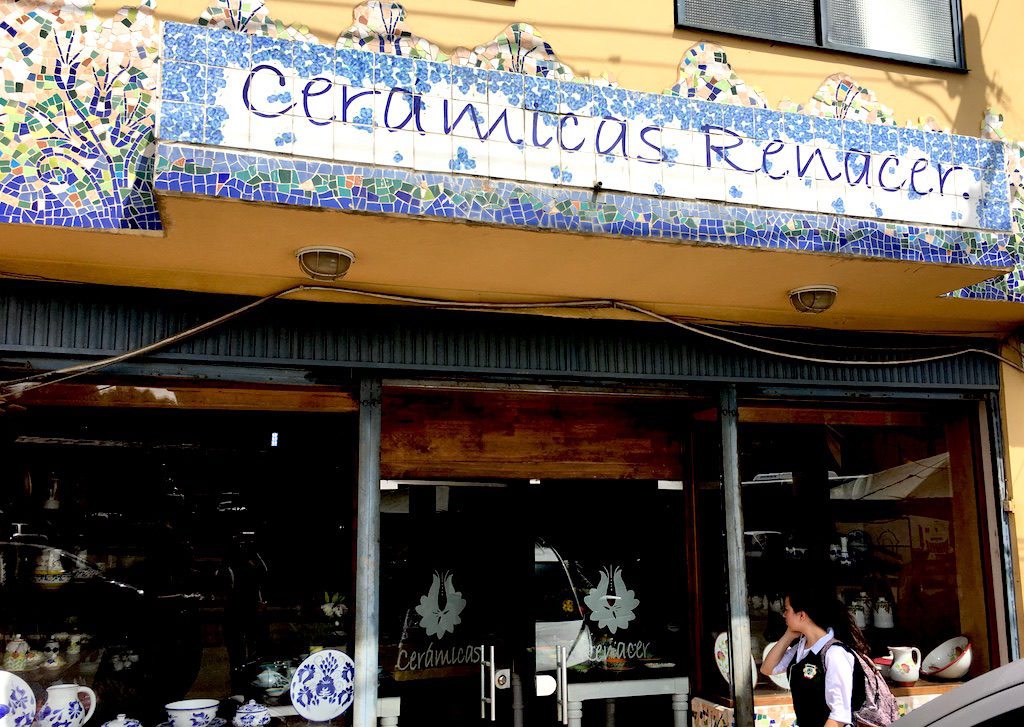
Cerámicas Renacer workshop and store in El Carmen de Viboral is one of the larger remaining factories
2. Visit a Local Workshop
Top of the list for any visitor to El Carmen de Viboral should be a tour of one of the local ceramics workshops. During a tour, you can learn about the process of hand-making each piece.
Most tours will show you how the wet clay gets transformed into one of a kind works of art. You will even get to meet some of the talented ladies that hand-paint each piece.
One ceramics workshop that offers tours is Cerámicas Renacer. This factory, whose name in English means to be born again, only opened in 1997 after the economic problems had past. Twenty years later, they are one of the leading ceramics producers in town.
During my visit, our young Colombian guide Migdonia showed us around the three-story premises outlining each step of the process, which is very similar amongst all the companies in town.
Some producers have better tools and technology and others have different techniques of finishes and decoration, but the general process remains the same.
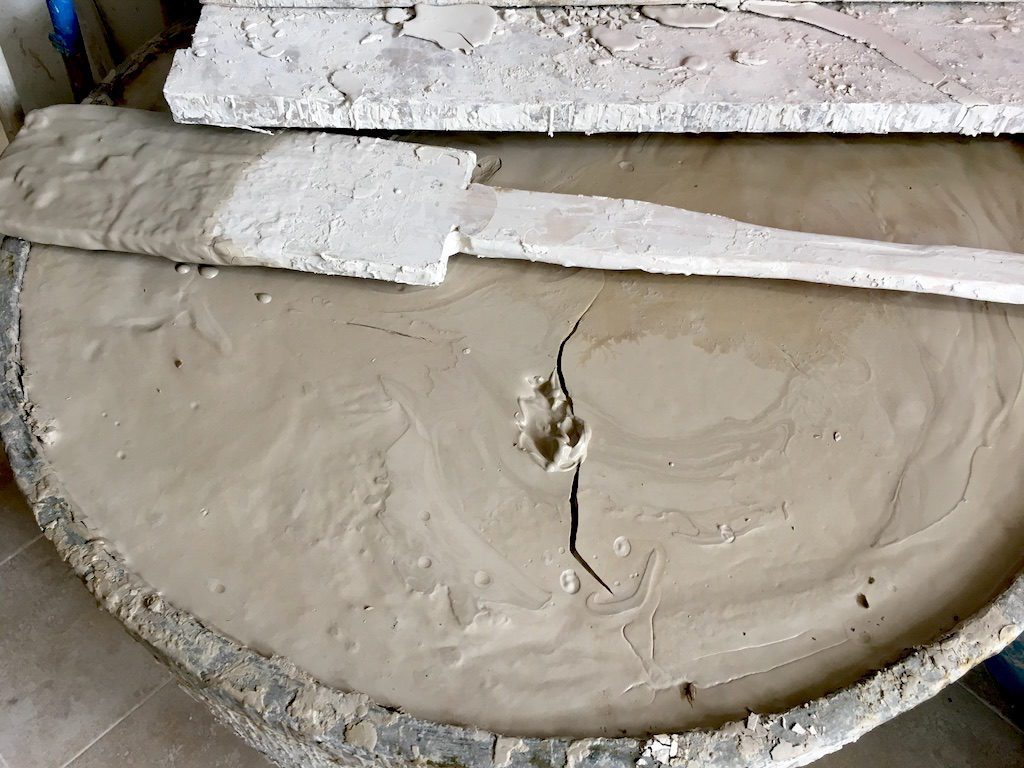
Clay paste waits to be poured into molds
First, the factories must produce the clay. This multi-step process involves various manipulations of the quartz and feldspar, including heating to over 1000C, combining with mud and kaolin, dissolving the mixture in water, and kneading the clay until the impurities are removed and it is ready to be poured into plaster molds.

A worker pours wet clay into pre-fabricated molds
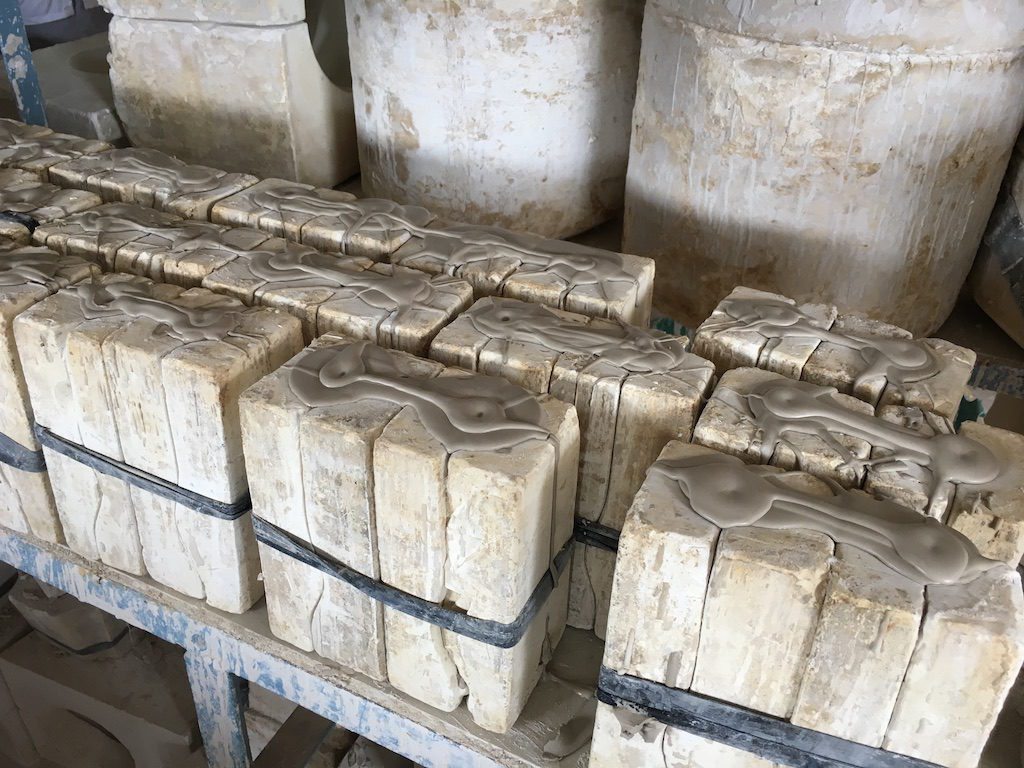
Spoon molds sit at room temperature for 5 to 6 hours until the clay mixture is solid
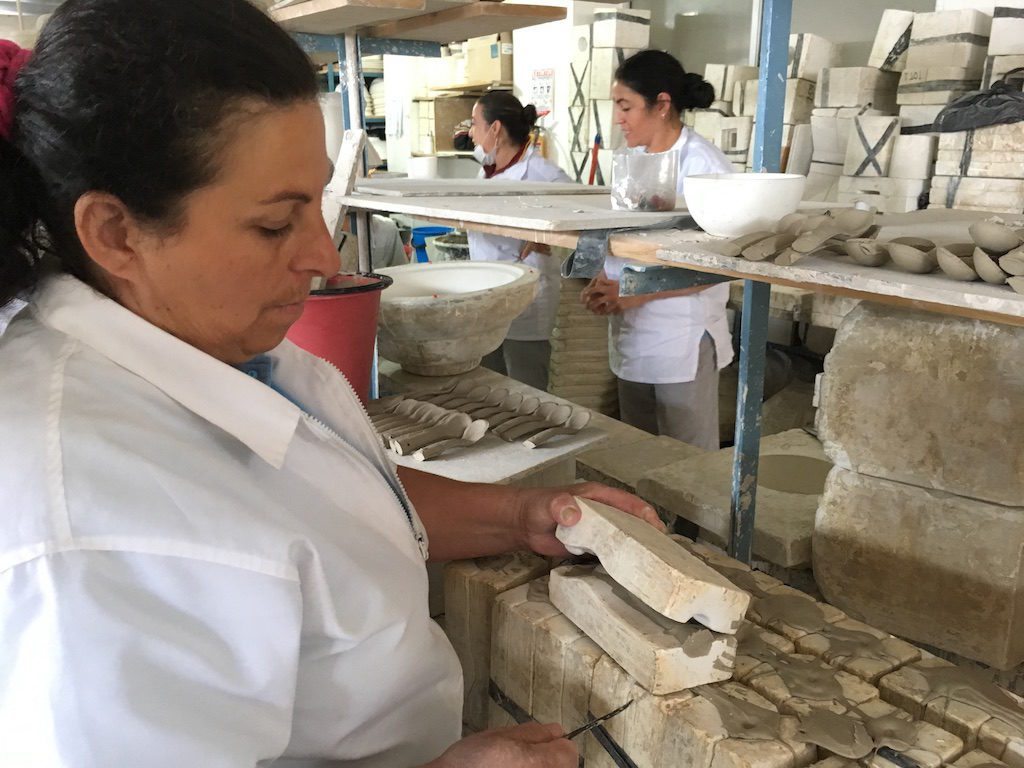
A worker at Cerámicas Renacer opens a spoon mold
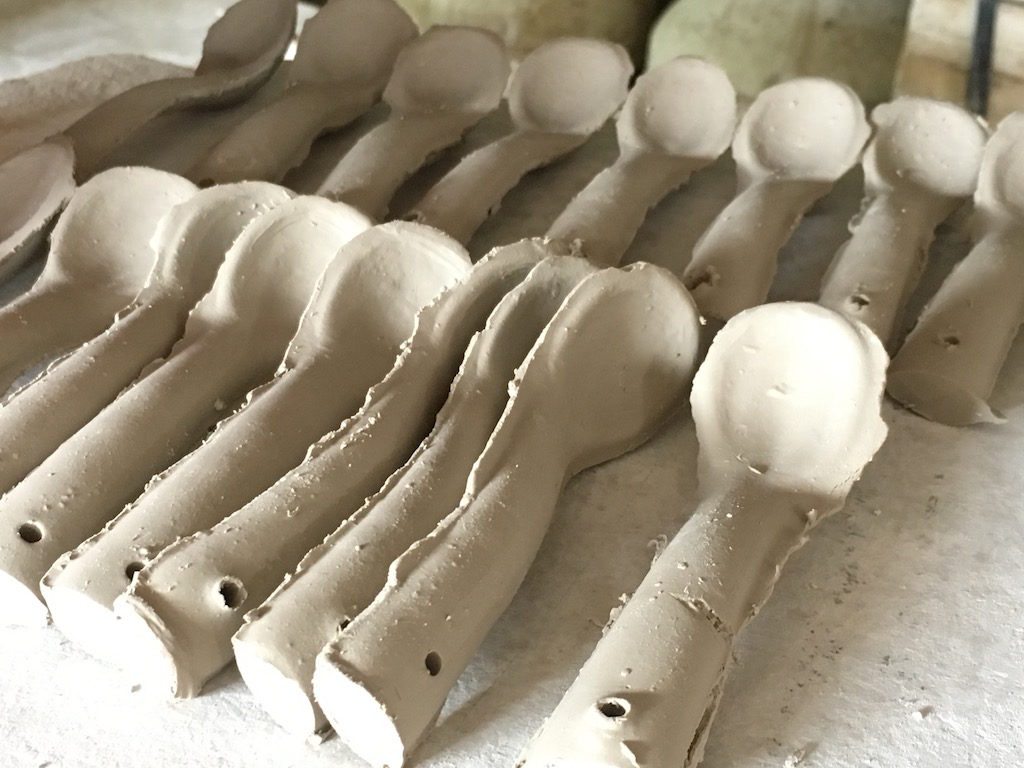
Spoon pieces are covered in burrs that must be hand removed with a wet sponge before baking
Once the liquid clay mixture is ready, it is poured into plaster molds. Here it sits at room temperature for 5 to 6 hours until it is solid. The outer mold is then removed to reveal the piece which is covered in burrs that must be removed by polishing with at wet sponge.
The pieces are then stored and left to rest until they physically do not have any water left in their composition. Once fully dry they are ready to undergo their first baking.
The pieces after baking are stark white and ready to be decorated with brushes, sponges or different painting utensils.
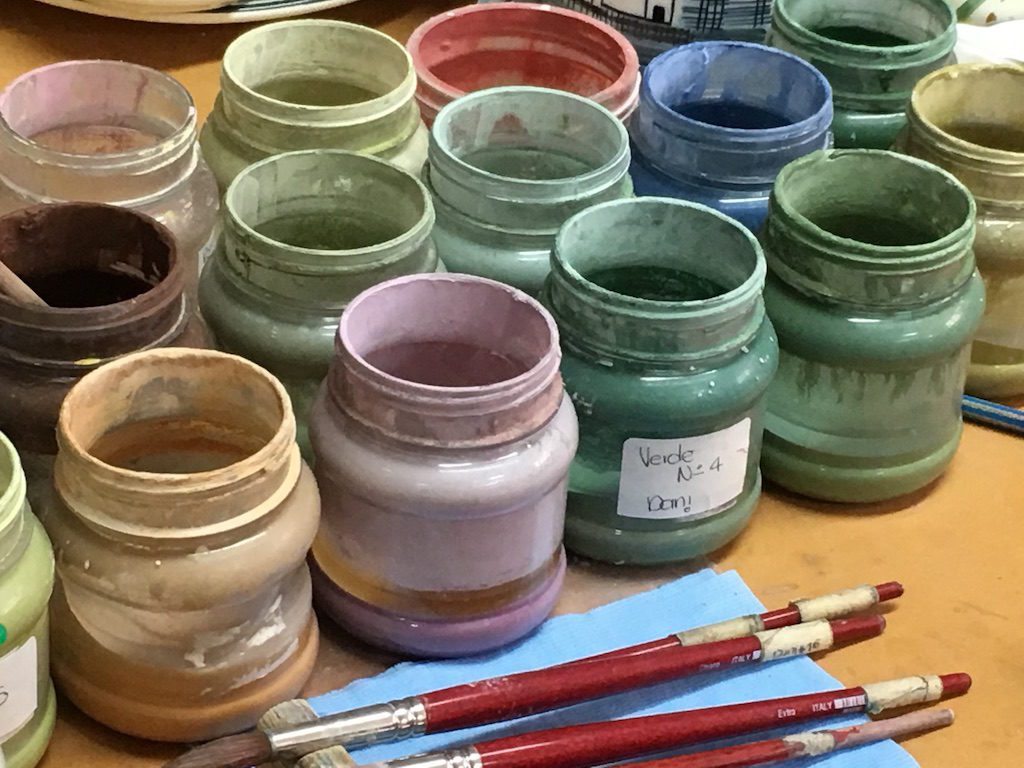
Artisans use a variety of colors and brush techniques to individual hand paint each of the potter pieces
Now is when the magic happens and what makes the pottery of El Carmen de Viboral so special. These clean white pieces go back into the hands of the artists – usually women – who paint on the floral motifs by free-hand.
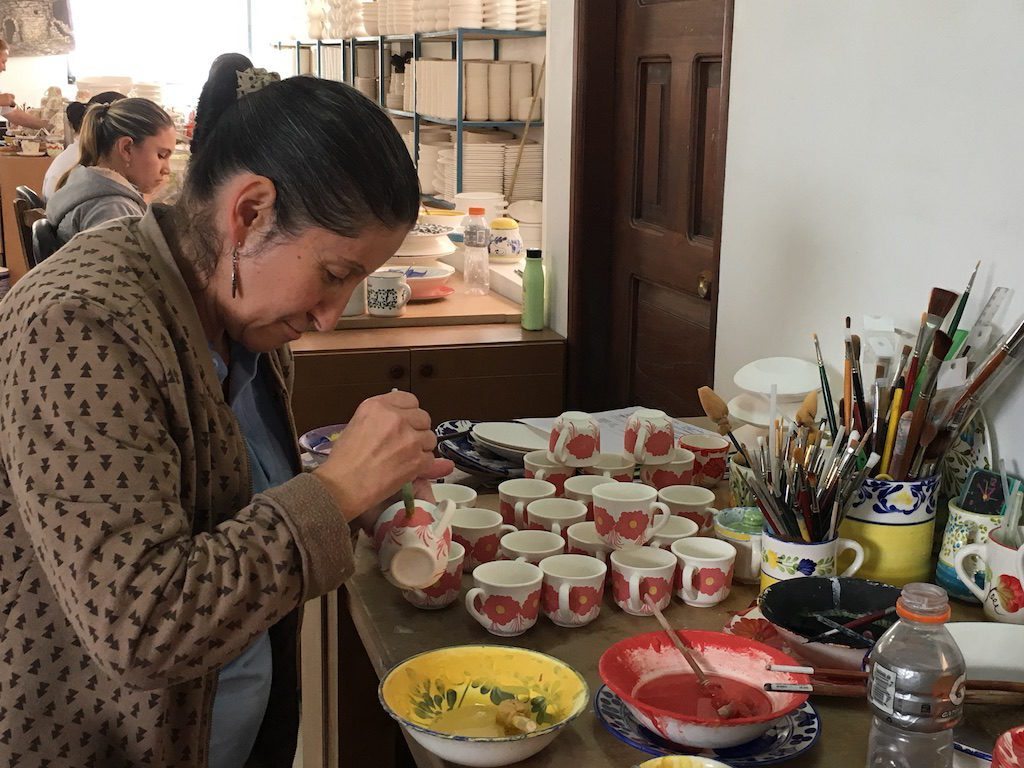
A worker paints on red flowers by free-hand
Using an existing pattern to copy just by a visual interpretation, they work without stencils or pre-printed patterns to delicately paint on colorful petals and intricate vine designs.
These floral motifs are one of the main characteristics of all the ceramics from El Carmen de Viboral, drawing inspiration perhaps from the pueblos’ close proximity to all the flower farms in Rionegro.
Painting a single plate can take up to 30 minutes, whilst the more complex pieces can take up to three hours to complete.
Some strokes are made by free-hand, whilst to create concentric shapes and thin edges, the pieces are placed on a lathe and spun whilst the artisan strokes on the color.
Although the they may have the same look or decoration, no two pieces are the same. The process is completely done by hand and the uniformity depends entirely on the ability of the decorator and there are always variations from one object to another.
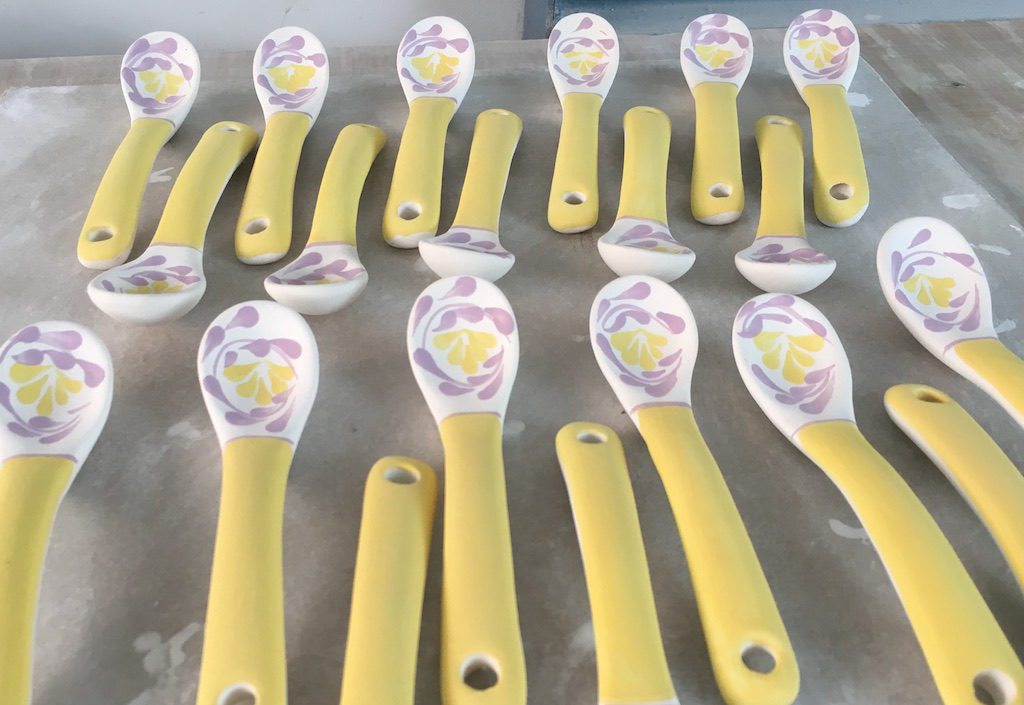
Painted spoons are ready to be immersed in transparent enamel before the final baking
In El Carmen de Viboral, the decoration technique is called under enamel, which means that once the piece is decorated it is then immersed in transparent enamel, which gives it the final glaze. These are then dried and go through their second baking. You then have your finished piece.
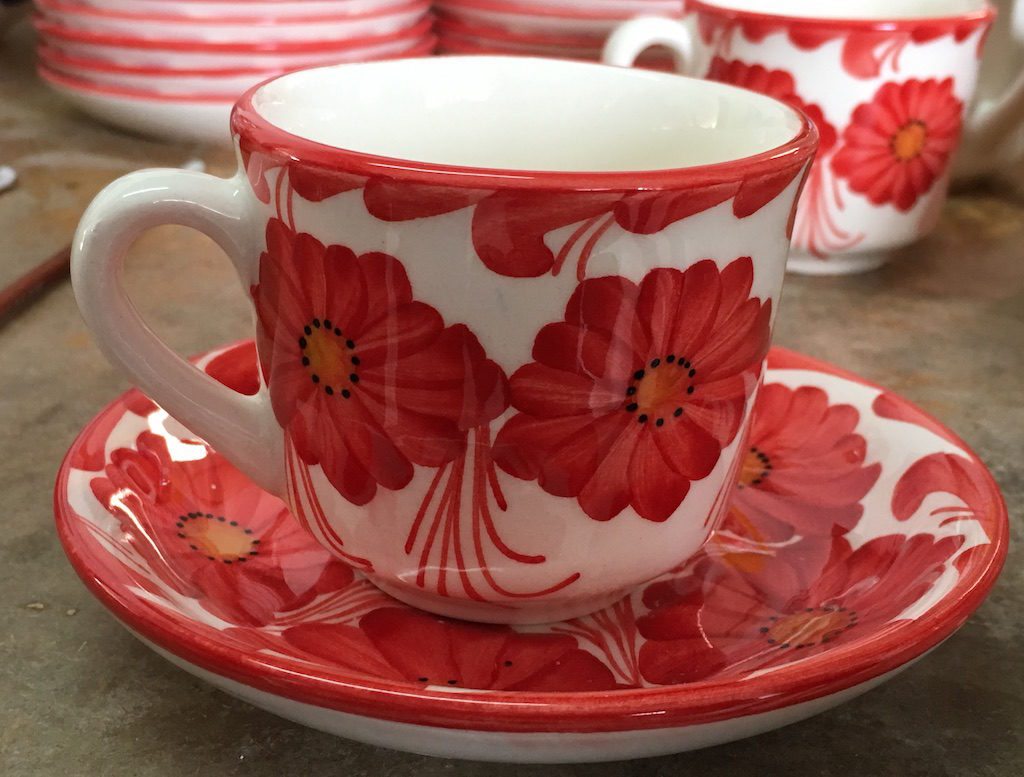
A finished cup and saucer
The pieces are then classified according to their final quality as either first, second or rejects.
The whole process for the simple plate designs takes up to 32 hours, depending on the size of the material. Complete dish ware sets can take more than a month to craft.
This tour will need to be organized in advance either by a tour guide or calling them directly.
3. Visit a Traditional Pottery Factory
After seeing a more modern workshop, it is worth driving into the countryside to see the traditional method of making larger, more utilitarian ceramic pieces. Think flower pots and large vases.
Set deep in the countryside where cows are allowed to roam freely down the road, you will find one of the country’s last remaining traditional pottery factories, run by the family who operated the factory La Cardona.
Step inside the wide expanse of the tin roof barn and your nostrils will fill with the smell of burnt wood and smoke will linger in your eyes.
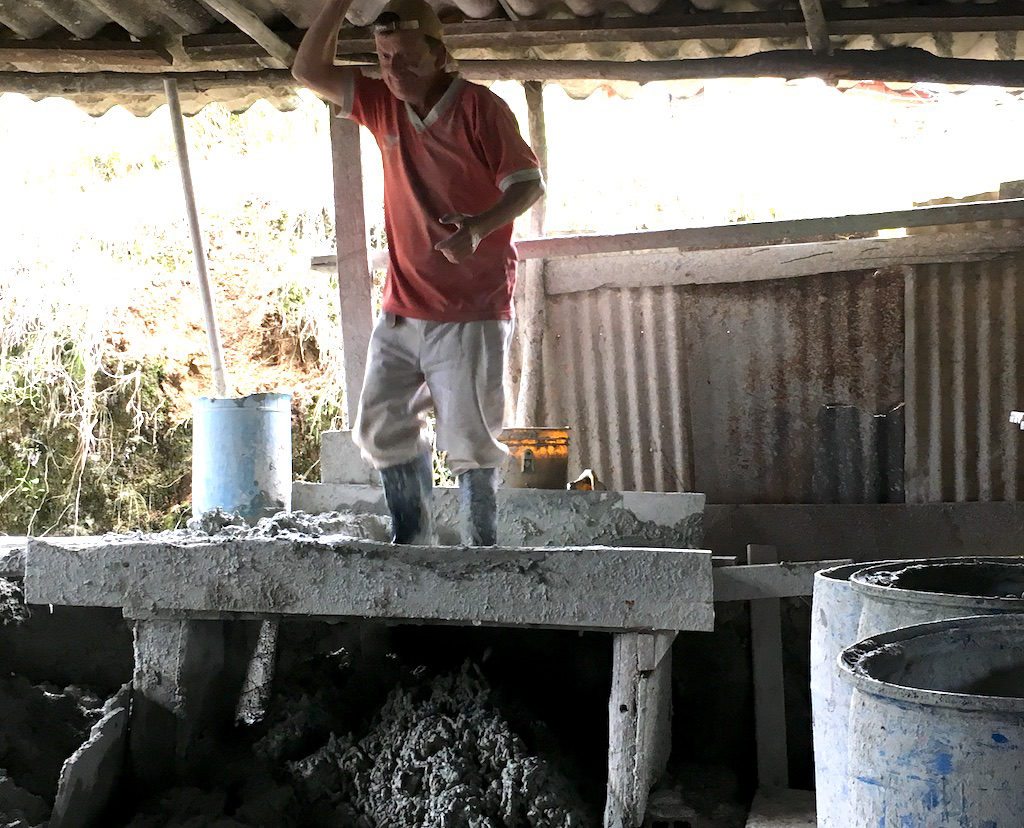
One factory in town still uses a very manual process of mixing the clay
Inside you’ll find the owner, with leathered skin and a curled mustache, stomping the slate grey clay mixture through a giant sieve in his rubber boots.
This authentic way of mixing the mud with quartz, feldspar, kaolin and water to create the paste for the molds is a unique sight to see. The pulverizing of the mixture and sieving is essential to prevent the final product from having impurities.
Like with the smaller pieces we witnessed being made in town, the clay is then poured into oversized molds. The larger pieces require a drying time of a week to 10 days before being filed down and then fired in their walk-in size classic brick oven.
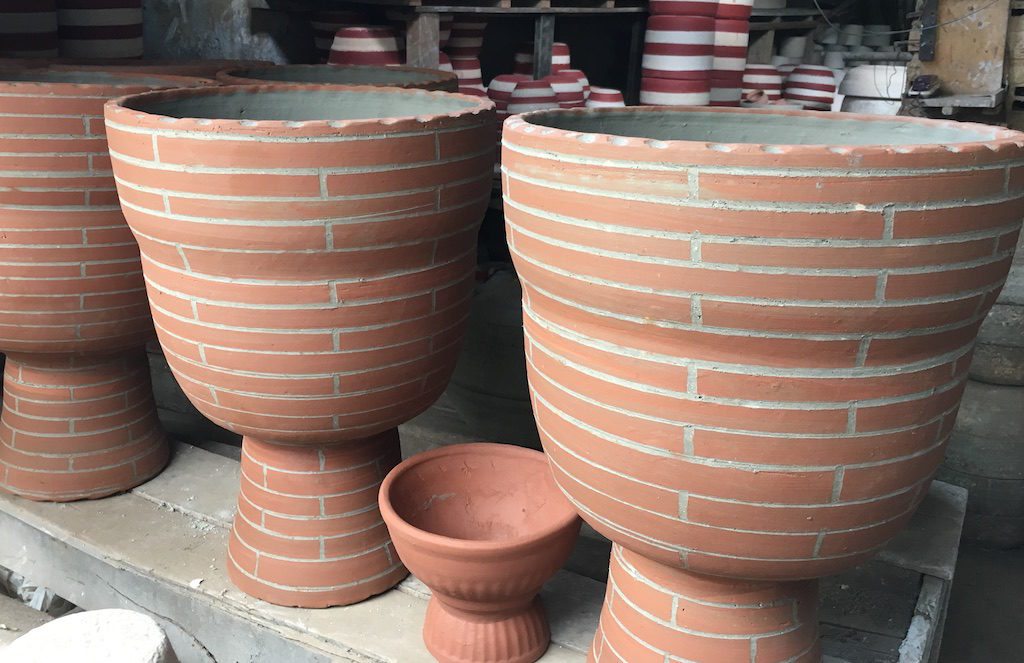
Examples of traditional pottery produced in El Carmen de Viboral
The results are basic but beautiful terra-cotta pots.
The entirely manual process takes weeks to create a single big plant pot that sells for a mere 10,000 pesos.
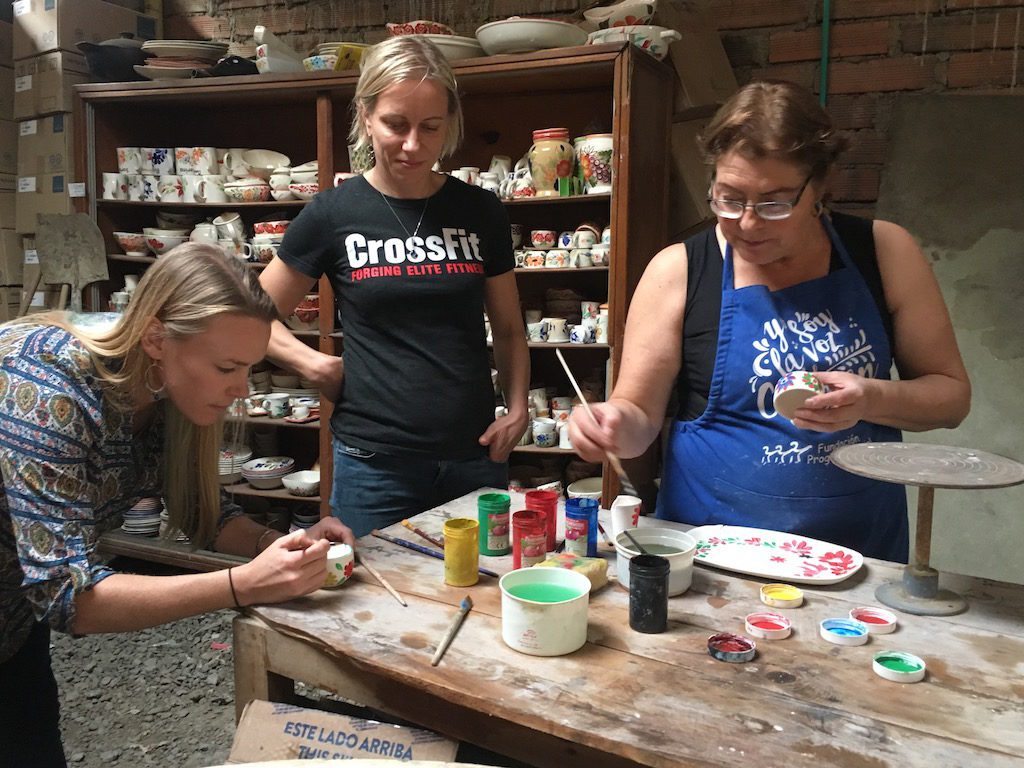
Tourists to El Carmen de Viboral paint their own floral motifs on small pots
4. Paint Your Own Piece
Once you learn how the professionals do it, then why not have a go yourself!
Several places in town offer the chance for you to paint your own flowers on a small piece. The tutor I found – Maria Berenice Zuluaga of Ceramics Berez – made the work look easy, but I can assure you that it was not!
In her tiny workshop off the main square, she laid out on a table some primary colors and showed the basic stroke to make for a flower.
I did my best to mimic her sweep of hand, but she was so mortified with my attempt that she asked if she could fix it for me to make it better. I was happy to oblige.
The hour I spent with her, trying my own hand at painting definitely gave me an appreciation of the talent that the ladies we met earlier in the day had.

Examples of dinnerware that can be purchased from Cerámicas Renacer in El Carmen de Viboral
5. Buy Your Own Piece
Better yet, just buy a piece from one of the many workshops in town. I bought a turquoise motif cup and saucer for a mere 18,000 pesos. A steal for such a lovingly hand-painted item. And a great souvenir of my time in Colombia that I can use every day.
Several of the other bigger producers in town include El Dorado and La Nacional.

The Parroquia Nuestra Señora in El Carmen de Viboral’s main square
6. Linger in El Carmen de Viboral’s Town Square
In the main town square, you’ll find a fountain and a variety of trees, along with some ceramic sculptures.
Flanking one side of the square is the modern church of “Nuestra Señora Del Carmen”, which was built in 1962 after an earthquake. It’s more modern facade seems out of place with the more traditional buildings around the square, making it impossible to miss.
The square is a great place to people watch and even grab a coffee from the makeshift jeep that sits on the corner.
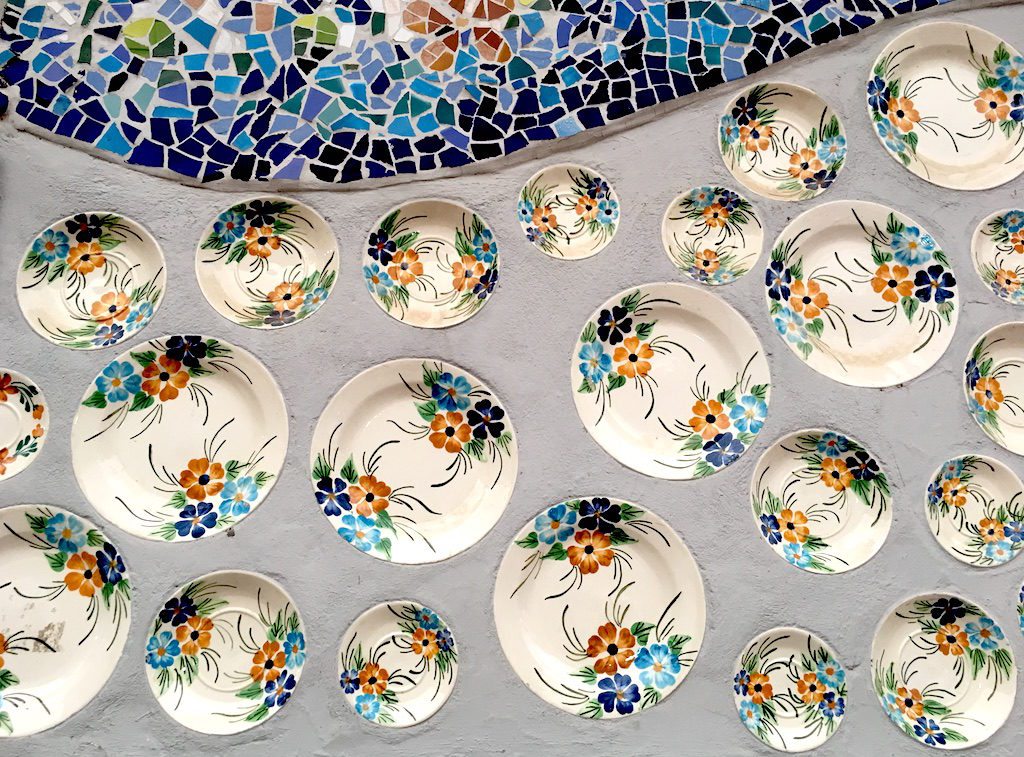
Vibrantly decorated plates are immersed into the wall on El Carmen de Viboral’s Ceramics Street
7. Stroll Down Ceramics Street
Finally, to end your day, don’t forget to take a stroll down Ceramics Street. Here artisans have taken broken shards of ceramics to make murals.
The designs include images of farmers, fruits, and geometric constructions. Some of them even include engraved texts and poems of local writers, such as the recognized poet Jose Manuel Arango.
There are also whole plates immersed in the walls, each finely decorated in their own unique style.
The works you will see on this street today are the result of a 2005 project based on Gaudi’s Parc Guell in Barcelona. It certainly livens up the area.
How to Get to El Carmen de Viboral
Guided Tour: I choose to visit El Carmon de Viboral as a day trip tour organized by Latin Hosts. The private guide was fluent in English and was needed by me to have to translate all of the information the local artisans distilled to us in Spanish.
By Bus: Flota el Carmen operates buses to El Carmen de Viboral leave from the North Bus Terminal in Medellín. Buses leave approximately every hour – from 9:45 it is at the three-quarters hour, but there are some earlier buses too. Cost is 8,000 pesos one way. Also, we have a guide to the Medellín bus terminals.
By Car: The drive will take about 1 hour and 30 minutes. Take the main route out of El Poblado via Avenida Las Palmas towards José María Córdova airport. From there follow the signs to Rionego and El Carmen de Viboral.
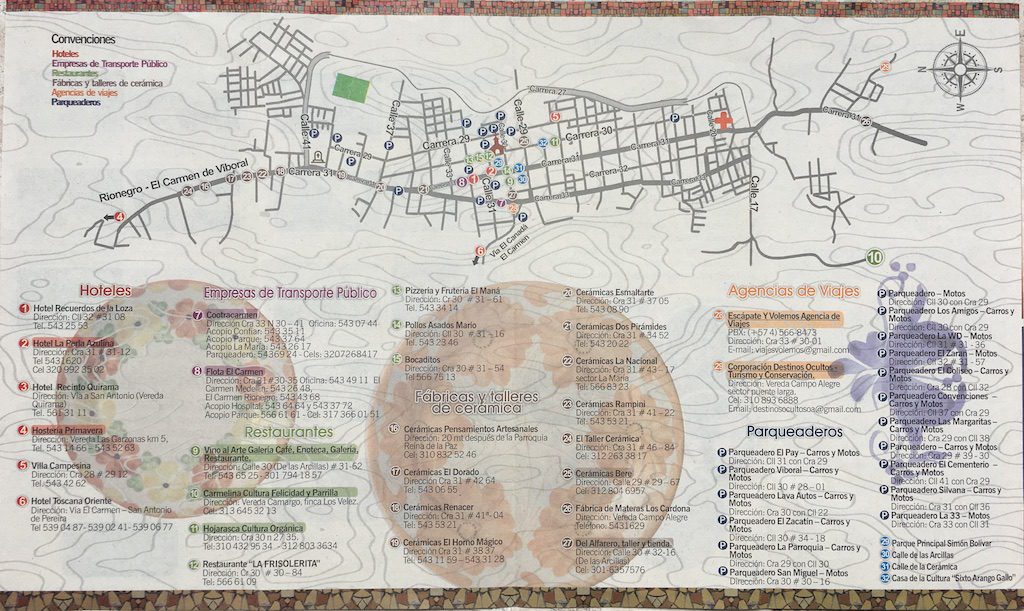
Map of El Carmen de Viboral
The Pueblos Near Medellín
We have been looking at the pueblos worth visiting near Medellín in a series on this website. So far, we have looked at eight pueblos near Medellín:
- Guatapé – a very popular pueblo near Medellín known for its huge rock and lake.
- Jardín – a tranquil get-away from Medellin that boosts breathtaking mountain views and less tourists than Guatapé.
- Santa Fe de Antioquia – known for its well-preserved colonial architecture and cobbled streets.
- Jericó – a picturesque pueblo known for its religious attractions, well-preserved colonial architecture and heritage, generous nature all around, hiking, paragliding, amazing landscapes and much more.
- San Carlos – a hidden gem surrounded by rivers, waterfalls and nature.
- Barbosa – an overlooked pueblo very near Medellín with streams, waterfalls, natural swimming pools, hiking, horseback riding and many other things to do.
- Abejorral – another hidden gem surrounded by waterfalls and dazzling landscapes with many opportunities for hikers and rock climbers.
- El Carmen de Viboral – the heart of Colombia’s ceramics industry.
We included El Carmen de Viboral in our article about the best pueblos near Medellín worth visiting. And we plan to look at several more pueblos near Medellín.
Also, we looked at Salento, which is a popular pueblo in Colombia’s coffee region that is definitely worth visiting. And we looked at San Gil, which is a pueblo known as “Colombia’s Adventure Capital” with so much to do including rafting, paragliding, caving, rappelling, hiking and much more.
The Bottom Line: El Carmen de Viboral
A day trip to El Carmen de Viboral left me inspired and completely in awe of Colombian craftsmanship. It’s definitely a day-trip worth considering, particularly if you are looking to visit a less touristic place compared to touristy Guatapé and Santa Fe de Antioquia.
Sign up for the Free Medellin Guru Newsletter – You can see all of the previous Medellin Guru weekly email newsletters and sign up here.


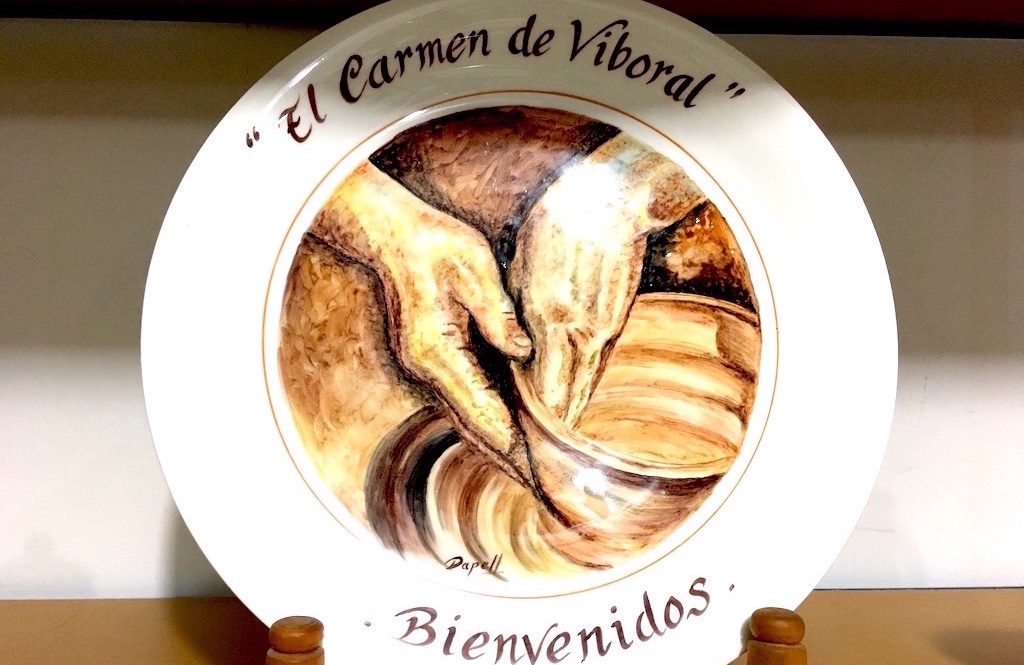
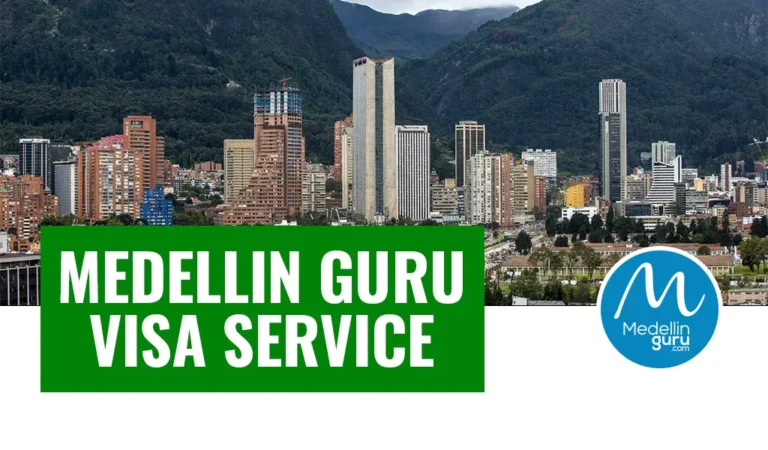
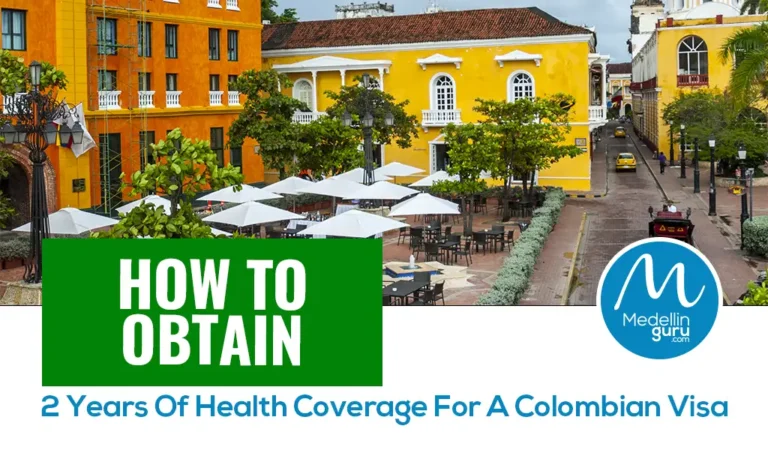




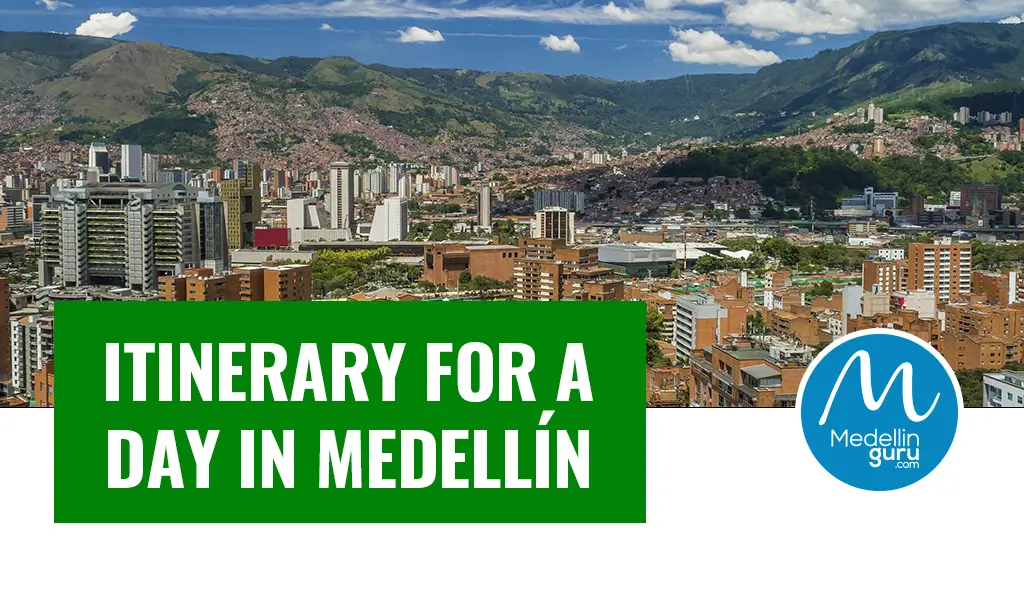

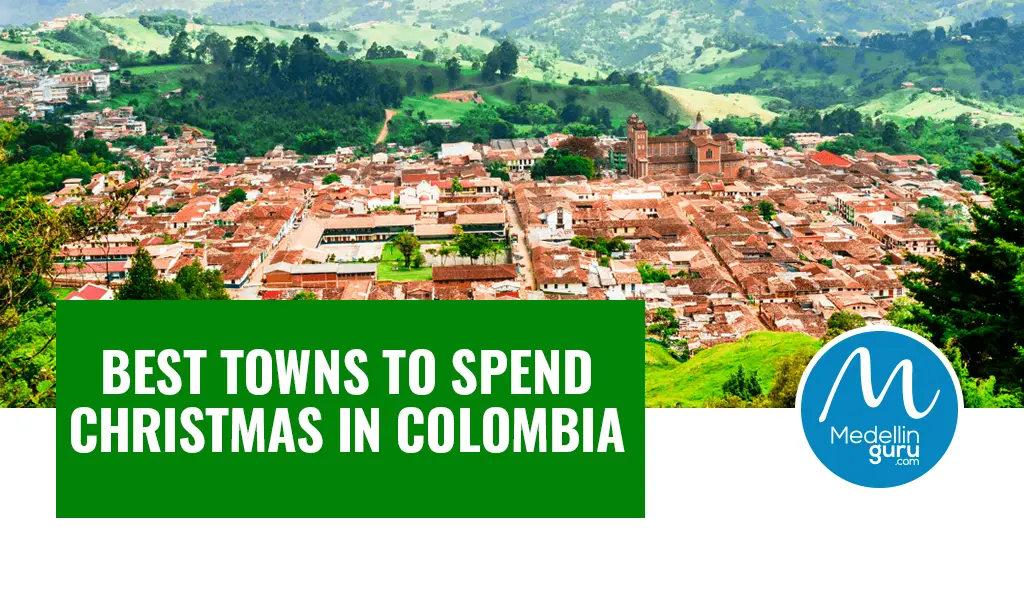




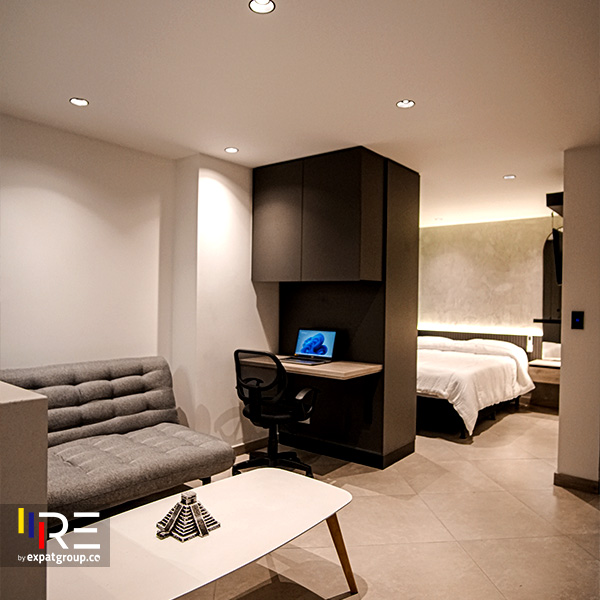

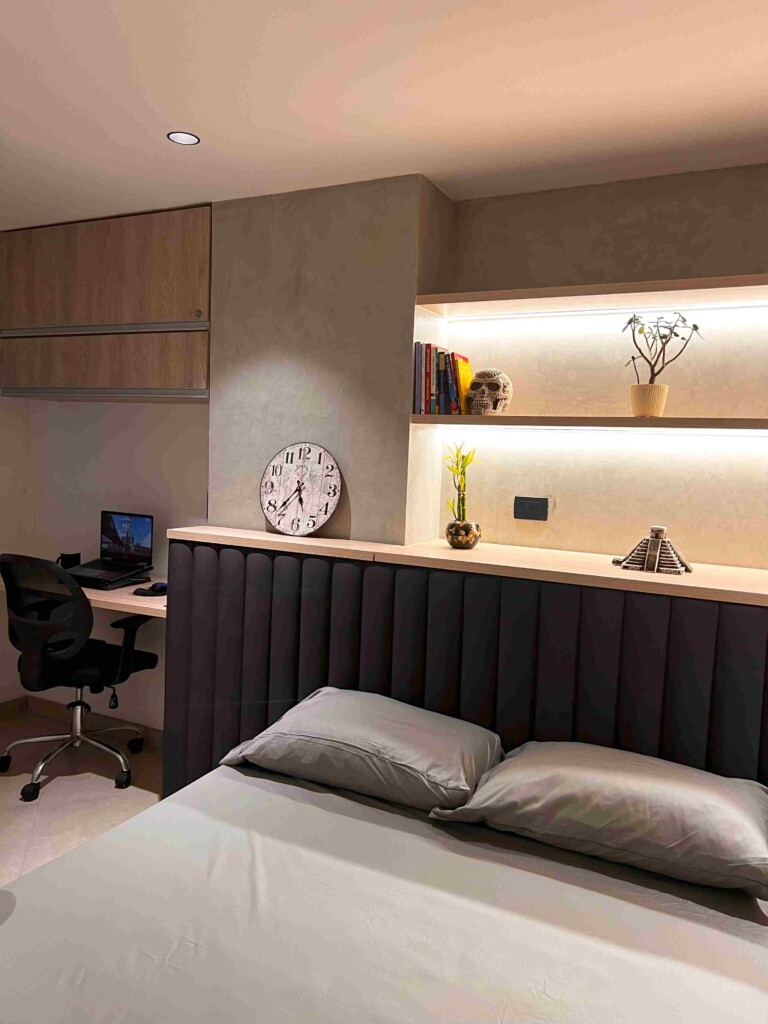

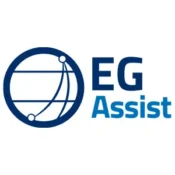


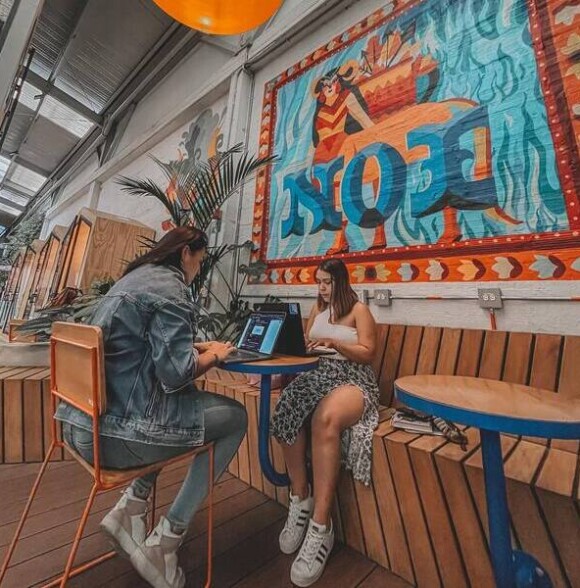

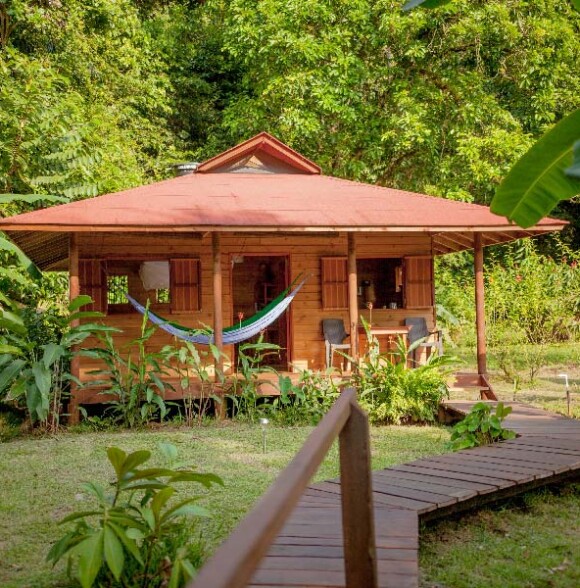
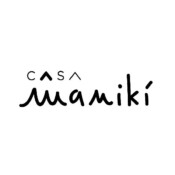
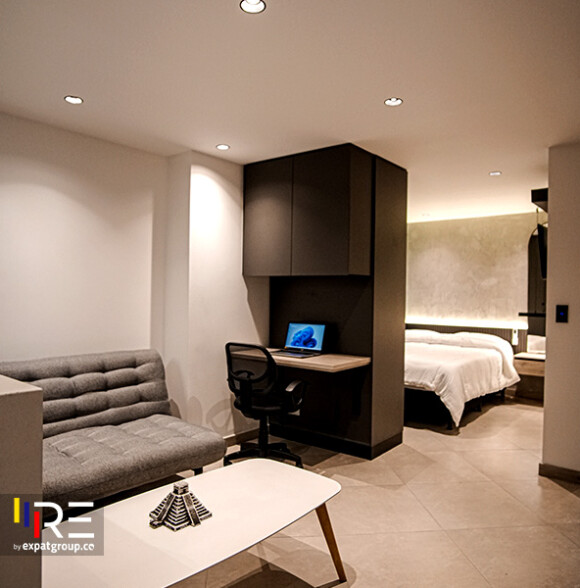





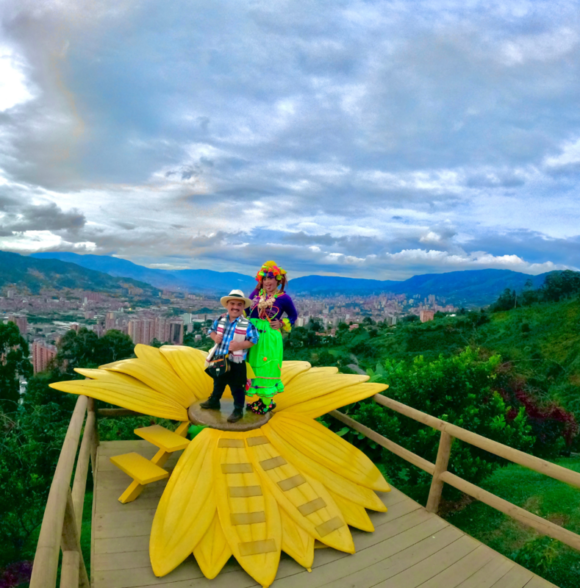


6 thoughts on “El Carmen de Viboral: Heart of Colombia’s Ceramics Industry”
Thanks for the great article. I will be on a group trip and I am going to look into making a side trip of my own to El Carmen de Viboral. But if it can’t be arranged due to timing, I am wondering if there are stores in Medellin or Bogota or even Cartagena where the pottery is sold?
Thanks.
Cindy
Thank you for the great article. I’m on my way to a meditation and yoga retreat called La Casa de Loto as we speak and while sitting in the Toronto Airport, I decided to research Carmen de Viboral as it’s the little town nearest to the meditation retreat I’m going to. I’ll be staying overnight there in a month and your article was very helpful. Cheers, Julie
How lovely! Would like to see the piece you painted!
Great article with some nice photos. I love visiting the small pueblos near Medellin and this one is definitely added to my to-do list.
Thanks Gwendolyn for the very interesting post. Looks like a good day trip from Medellin.
Thank you Maria! I went with three girlfriends and we had a really enjoyable day. Somewhere different to explore nearby if you’ve already been to Guatape and Santa Fe.